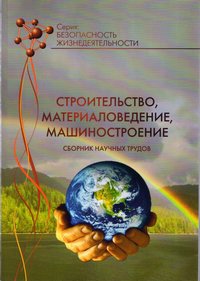Assessment of technological risk when emissing hazardous substances to the atmosphere
DOI:
https://doi.org/10.30838/P.CMM.2415.250918.182.149Keywords:
territorial risk, chemical pollution, numerical simulation, air pollutionAbstract
Purpose. Development of a numerical method for assessing territorial risk in open areas and inside buildings in the event of a release of a chemically hazardous substance. Methodology. To describe the process of dispersion of a chemical agent, in case of release of a chemically hazardous substance, the two-dimensional equation of convective-diffusive dispersion of the pollutant in the atmospheric air is used. The equation takes into account the parameters of the meteorological situation, the intensity of the emission of a chemical agent, the presence of buildings near the place of emission of a chemically dangerous substance. For the numerical integration of the modeling equation, an implicit alternating triangular difference scheme is used. To model the wind flow in the presence of buildings, a potential flow model is used. To solve the Laplace equation for the velocity potential, the total approximation method is used. A feature of the developed numerical model is the possibility of assessing the territorial risk, in the event of a release of a chemically hazardous substance, under various weather conditions and the presence of buildings. Findings. A specialized set of programs has been developed that can be used to assess the territorial risk in the event of the release of a che mically hazardous substance at industrial sites. The method can be implemented on computers of low and medium power, which allows it to b e widely used to solve problems of this class. The results of a computational experiment are presented, allowing to evaluate the possibilities of the proposed method of assessing the territorial risk in the event of a release of a chemically dangerous substan ce. Originality. An effective method for assessing the territorial risk in the event of a release of a chemically hazardous substance on the industrial site is proposed. The method can be used to assess territorial risk in urban areas, which allows to obtain adequate data on the possible affected areas, both in open areas and indoors. The method is based on the numerical integration of the mass transfer equation and the Laplace equation for the velocity potential. Practical value. The proposed method of assessing the territorial risk in the event of a release of a chemically hazardous substance with the use of a chemical agent at industrial sites. The method can be used to calculate the affected areas near administrative buildings, centers and other socially significant objects.
References
Alymov. V.T., Tarasova N.P. Tekhnogennyy risk: Analiz i otsenka [Technogenic risk: Analysis and evaluation]. Uchebnoye posobiye dlya vuzov [A manual for higher education institutions]. Moscow: IKTs «Akademkniga», 2004, 118 p. (in Russian).
Belyayev N.N., Gunko E.Yu., Rostochilo N. V. Zashchita zdaniy ot proniknoveniya v nikh opasnykh veshchestv [Protection of buildings from the penetration of hazardous substances into them]. Monografiya [Monograph]. Dnepropetrovsk: «Aktsent PP», 2014, 136 p. (in Russian).
Belyaev N.N., Gun'ko E.Yu., Kirichenko P.S. and Muntyan L.Ya. Otsenka tekhnogennogo riska pri emissii opasnykh veshchestv na zheleznodorozhnom transporte [Assessment of man-made risk in the emission of hazardous substances in railway transport]. Krivoy Rog: Kozlov R.A. Publ., 2017, 127 p. (in Russian).
Stoetskiy V.F., Golin'ko V.I. and Dranishnikov L.V. Otsenka riska pri avariyakh tekhnogennogo kharaktera [Risk assessment for accidents of anthropogenic nature]. Naukovyi visnyk NHU [Scientific bulletin of NMU]. 2014, no. 3. pp. 117-1124. (in Russian).
Zgurovskiy M.Z., Skopetskiy V.V., Khrushch V.K. and Belyaev N.N. Chislennoye modelirovaniye rasprostraneniya zagryazneniya v okruzhayushchey srede [Numerical modeling of pollution spreading in the environment]. Kyiv, Naukova dumka Publ., 1997. 368 p. (in Russian).
Anthony Michael Barret (2009), ―Mathematical Modeling and Decision Analysis for Terrorism Defense: Assessing Chlorine Truck Attack Consequence and Countermeasure Cost Effectivness. Dissertation‖ (Pittsburg, Pennsylvania, USA), 123p.
Biliaiev, M. (2012), ―Numerical Simulation of Indoor Air Pollution and Atmosphere Pollution for Regions Having Complex Topography‖, Air Pollution Modeling and its Application XXI (Springer). – P. 87-91.
Chan W.R., Nazaroff W.W., Price P.N., Gadgil A.J. Effectiveness of Urban Shelter-in-Place. II: Residental Districts, 2008. 31 р. Available at: http://www.osti.gov/scitech/servlets/purl/928232 (Accessed 29 March 2014). doi: 10.1016/j.atmosenv.2007.04.059.
John S. Nasstrom, Gayle Sugiyama, Ronald L. Baskett, Shawn C. Larsen and Michael M. Bradley (2007), ―The National Atmospheric Release Advisory Center (NARAC) Modeling and Decision Supports System for Radiological and NUCLEAR Emergency Preparedness and Response‖ (Int. J. Emergency Management), no. 3, vol. 4, pp. 1-32.
Downloads
Published
Issue
Section
License
Редакція Видання категорично засуджує прояви плагіату в статтях та вживає всіх можливих заходів для його недопущення. Плагіат розглядається як форма порушення авторських прав і наукової етики.
При виявлені у статті більш ніж 25% запозиченого тексту без відповідних посилань та використання лапок, стаття кваліфікується як така, що містить плагіат. У цьому випадку стаття більше не розглядається редакцією, а автор отримує перше попередження.
Автори, в статтях яких повторно виявлено плагіат, не зможуть публікуватися в усіх журналах Видавництва ДВНЗ «Придніпровська державна академія будівництва та архітектури».
Автори, які публікуються у цьому журналі, погоджуються з наступними умовами:
- Автори залишають за собою право на авторство своєї роботи та передають журналу право першої публікації цієї роботи на умовах ліцензії Creative Commons Attribution License, котра дозволяє іншим особам вільно розповсюджувати опубліковану роботу з обов'язковим посиланням на авторів оригінальної роботи та першу публікацію роботи у цьому журналі.
- Автори мають право укладати самостійні додаткові угоди щодо неексклюзивного розповсюдження роботи у тому вигляді, в якому вона була опублікована цим журналом (наприклад, розміщувати роботу в електронному сховищі установи або публікувати у складі монографії), за умови збереження посилання на першу публікацію роботи у цьому журналі.
- Політика журналу дозволяє і заохочує розміщення авторами в мережі Інтернет (наприклад, у сховищах установ або на особистих веб-сайтах) рукопису роботи, як до подання цього рукопису до редакції, так і під час його редакційного опрацювання, оскільки це сприяє виникненню продуктивної наукової дискусії та позитивно позначається на оперативності та динаміці цитування опублікованої роботи (див. The Effect of Open Access).

